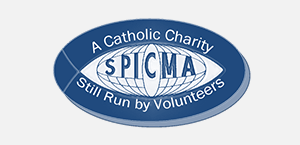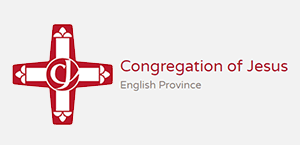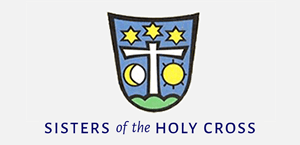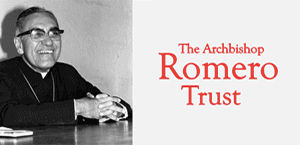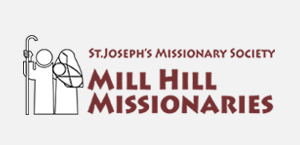Ian Linden: Springtime on the Suffolk coast
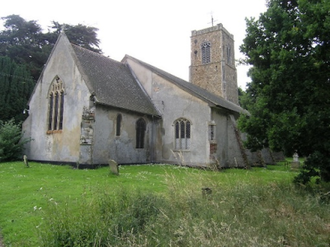
St Peter's Church, Wenhaston. Wiki Image
It is hard to beat the Suffolk Coast in Spring for old-fashioned Englishness. The tea shops shut at 4pm. Big jars of sweets, awaiting Easter and families heading for Southwold beach or crabbing in the Blythe estuary, look forlorn in Squire's tea room window. South of neighbouring Walberswick reeds are still cut for thatching. Morris dancers appear on May Day.
In Suffolk there is no church from which you can't see another church - or so it is said. Yet 'old maids bicycling to Holy Communion through the morning mist' are as thin on the ground as butterflies and squashed hedgehogs. The words are taken from George Orwell's wonderfully titled essay, The Lion and the Unicorn: Socialism and the English Genius, a 1941 morale-booster, post-Dunkirk, as Britain stood alone against Nazi Germany.
From 1932 Eric Blair lived intermittently with his family at the top of the High Street in Southwold, a prickly presence, somewhat out of place.
in 1993, John Major, with a divisive vote nearing on the EU's Maastricht Treaty, drew on Orwell for another booster speech. The then Prime Minister assured the Conservative Group for Europe that Britain would 'survive unamendable in all essentials' within the European Union. Forget Jerusalem's dark satanic mills, we were, and would remain, 'the country of long shadows on county [cricket] grounds, warm beer, invincible green suburbs, dog lovers and pools fillers'. Not nearly demotic enough - even then - for the tone of re-assurance demanded of politicians in times of crisis today.
But change has come. Beer, (here, Adnams fresh from Southwold's brewery), is a pleasure routinely taken cooler today. The 'green suburbs', and many green fields, have been far from invincible in the face of Sizewell C's invading construction army invincible so long as the money doesn't run out. New housing, mostly beyond the means of local people, growing numbers of workers, new roads, vast car parks and outsized trucks with police escorts, are the first wave. But John Major's 'dog lovers' have multiplied, their dogs shouted at and happily ignoring them; some with up to three animals in tow. And do people even know what might his 'pools fillers' be? Football pools - on-line today?
The beauty of Suffolk's coast hasn't aged. South of Dunwich, the great spread of wetlands with swaying reedbeds in the National Nature Reserve with their promise of bitterns and otters, the heathland yellow with gorse, skylarks trilling you away from their nests, woods with deer and misshapen muntjacs at dawn and dusk. Terra divina with memories of war. The pillboxes and the anti-tank traps, the forbidding forts, once ready for Napoleon, now just grim. So is Orford Ness with its nearby World War II radar stations, its atomic bomb and museum, testing site for the strength of the weapon's outer casing.
For anyone who has lived in Africa near the equator, where the sun is switched off at 6pm and you can watch a vulture in the garden at Christmas, the seasons in Suffolk are a joy. From January, a floral sequence keeps pace with the months: snowdrops, then daffodils, and bluebells, and daisies, bursting buds on the trees, grey goes to green, and cherry blossom. You can pretend the resident robin is joyfully greeting you on arriving home (and ignore it is telling you to get off its territory). And the rabbits begin re-appearing plus - locally bred - pheasants. No gentle tinkling of cowbells in Suffolk, just gunshots, a one-hour fusillade from the gun club on some Sundays rivalling the church bells. And pig noises and pheasants' flapping as they take off on suicidally-straight trajectories, very different IQs but a shared limited life expectancy.
Next, by way of other local treats, is the long anticipated food sequence: asparagus followed by strawberries and raspberries. At Aldeburgh - expensive - fish straight off the boats is available , and cheaper kippers from a beach-side shack that smokes anything that moves in the sea. The fish and chips is good too but, eaten on the promenade in the open air, likely to be shared with aggressive seagulls.
As Spring turns to Summer, the near-deserted winter streets and the empty holiday homes will have filled up. Time for London journalists short of a story, and canny visitors from Hackney, to find their way to the beautiful stretch of Covehithe with its terns, curlews and sand martins, well cared for by bird lovers.
You can also attend the August Fete in affluent Walberswick, holiday home for TV and movie celebrities, actors and directors. The fun isn't so much the fete but watching the celebs pretend, with the best will in the world, that they are 'ordinary villagers' having a nice time. The celebs' glitter is welcome unlike in the Walberswick of 1915 when the resident, but unrecognized celebrity, the Scottish architect, Charles Rennie Mackintosh, was put under house-arrest, suspected because of his accent and odd dress of being a German spy. Those were the days when the village had up to 300 boats and watchful working women, leery of strange newcomers, processed prodigious herring catches.
You can cross from Walberswick to Southwold in the Summer by a little ferry. The tide is ferocious as if someone has taken the plug out of a full bath. Or you can walk west over a narrow bridge and back along the Southwold side of the harbour crammed with yachts and boats at anchor. No-one ever seems to take them out, status symbols pleasant on the eye.
Walberswick sits on the Blythe estuary, an expanse of river which meanders past Blythborough's 12th century - priory - church. Courtesy of Augustinian monks and the mediaeval wool trade, the church is the size of a small cathedral. In the roof above its high aisle is a line of angels with perfect carved swans' wings. Too high for the Puritan Taliban to tear down.
A few miles away upriver at Wenhaston a mediaeval 'doom' painting also survived on eleven planks of wood once topping the church's rood screen. ( Under Henry VIII's son, Edward VI, all church paintings were ordered to be white-washed). The Wenhaston 'doom' was thrown out but discovered in the late 19th century after rain washed away the whitewash exposing the picture of the Last Judgement. Some of the detail is delightful. The Archangel Michael stands between Heaven on the left, Hell on the right, holding the scales of justice, its two pans weighing salvation. On one, a single pure soul outweighing two devilish-looking souls sitting on the other. To the left are a king, queen, bishop and, perhaps, scholar each equally naked approaching St. Peter who holds the key to Heaven. A message of equality and mercy to a largely illiterate congregation.
Perhaps this is mere nostalgia but you sense that, along this most easterly bump in England's coast, something of John Major's 'unamendable' Britain of bygone years survives. It's a Britain that badly needs amending today.
Professor Ian Linden is Visiting Professor at St Mary's University, Strawberry Hill, London. A past director of the Catholic Institute for International Relations, he was awarded a CMG for his work for human rights in 2000. He has also been an adviser on Europe and Justice and Peace issues to the Department of International Affairs of the Catholic Bishops Conference of England and Wales. Ian chairs a new charity for After-school schooling in Beirut for Syrian refugees and Lebanese kids in danger of dropping out partnering with CARITAS Lebanon and work on board of Las Casas Institute in Oxford with Richard Finn OP. His latest book was Global Catholicism published by Hurst in 2009.
LINK
Ian Linden Latest Blogs: www.ianlinden.com/latest-blogs










